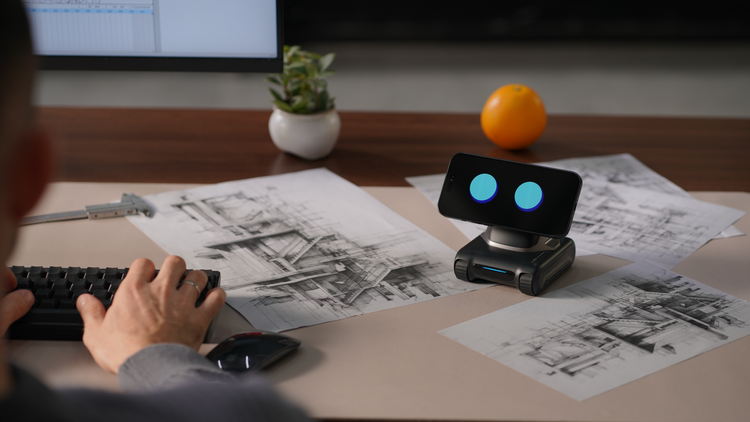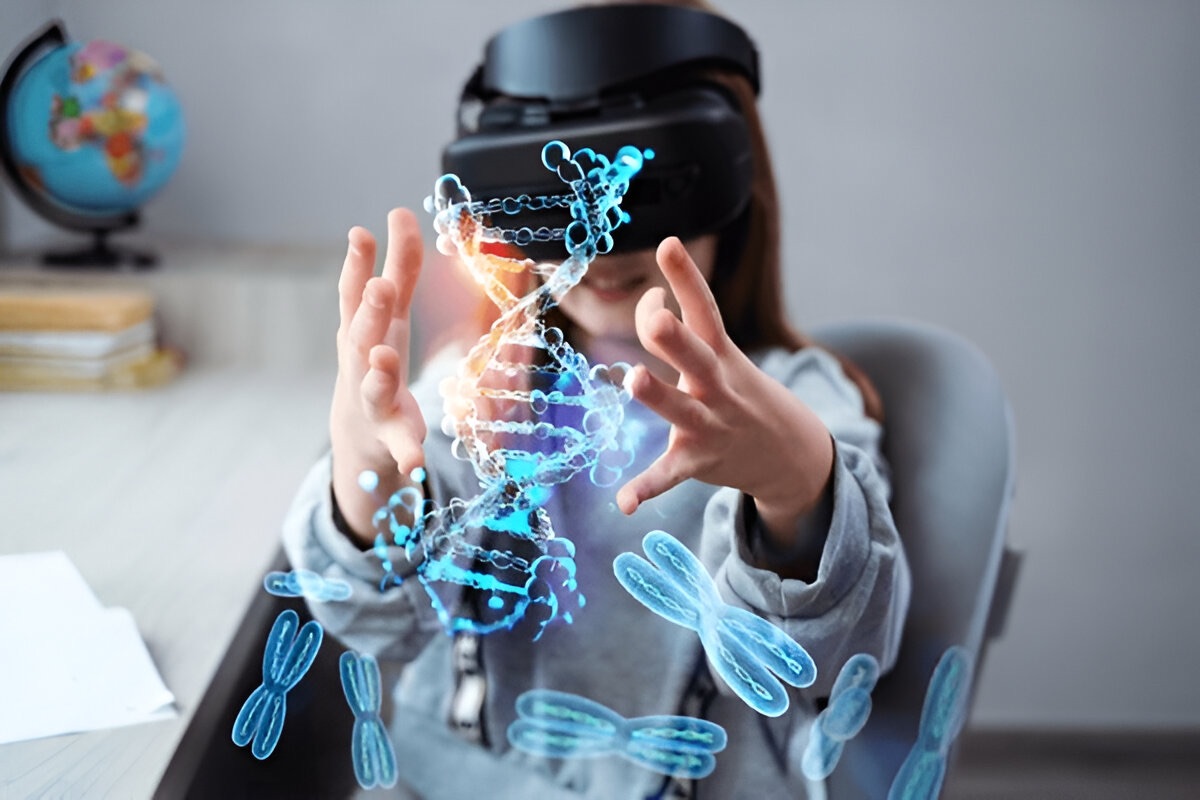The Future of Artificial Intelligence in Home and Daily Life
July 7, 2025 Word Count: Approximately 3,000
Introduction to AI in Everyday Life
Artificial Intelligence (AI) is no longer a futuristic concept confined to science fiction; it has seamlessly integrated into our homes and daily routines, transforming how we live, work, and interact. From smart assistants that manage our schedules to AI-powered appliances that anticipate our needs, AI is revolutionizing domestic life. By 2030, AI is expected to be as ubiquitous as electricity, with humanoid robots and intelligent systems becoming commonplace in households worldwide. This article explores the future of AI in home and daily life, highlighting real-life examples, emerging AI gadgets, and their potential to redefine normalcy. With high SEO keywords like “AI in daily life,” “smart home technology,” and “future AI gadgets,” we’ll delve into how AI is shaping a smarter, more convenient future.
The Evolution of AI in Homes
From Early Automation to Intelligent Systems
AI’s journey in homes began with simple automation, like programmable thermostats and voice-activated lights. Today, machine learning (ML) and natural language processing (NLP) enable devices to learn from user behavior, adapt to preferences, and make decisions autonomously. For instance, Google’s Nest Thermostat uses AI to analyze your heating and cooling patterns, optimizing energy use while maintaining comfort. By 2025, AI is projected to power over 50% of home appliances, with global smart home market revenue expected to reach $141 billion by 2027. This evolution signifies a shift from reactive devices to proactive systems that anticipate needs.
AI’s Role in Personalization

Personalization is at the heart of AI’s home integration. AI algorithms analyze vast datasets—user habits, preferences, and even biometric data—to tailor experiences. For example, Spotify’s AI-driven playlists curate music based on listening history, while Netflix’s recommendation engine suggests shows with uncanny accuracy. In the future, AI will personalize everything from meal plans to lighting ambiance, creating homes that feel uniquely attuned to their inhabitants.
Current Real-Life Examples of AI in Daily Life
Virtual Assistants: The Household Command Center
Virtual assistants like Amazon’s Alexa, Google Assistant, and Apple’s Siri are prime examples of AI in daily life. These devices use NLP to understand and respond to voice commands, managing tasks like setting reminders, controlling smart home devices, or answering queries. For instance, Alexa can order groceries, play your favorite podcast, or adjust your Philips Hue lights—all with a single command. Over 70% of U.S. households own a smart speaker, showcasing their widespread adoption.

Smart Home Security Systems
AI-powered security systems, such as Ring Home Security or Google Nest Cam, leverage computer vision to detect motion, recognize faces, and differentiate between familiar and unfamiliar visitors. These systems send real-time alerts to homeowners’ smartphones, enhancing safety. For example, Ring’s AI can identify package deliveries and notify users instantly, reducing theft risks. By 2030, AI security systems are expected to incorporate predictive analytics, flagging potential threats before they occur.
Visit of latest home security Products

AI in Health and Fitness
Wearable devices like the Apple Watch and Fitbit use AI to monitor health metrics, such as heart rate, sleep patterns, and activity levels. The Apple Watch’s fall detection feature, for instance, uses AI algorithms to analyze movement data and automatically alert emergency services if a fall is detected. Similarly, AI-powered apps like MyFitnessPal suggest personalized meal plans based on dietary goals, making health management intuitive.

Autonomous Home Appliances
AI is transforming household appliances into autonomous helpers. iRobot’s Roomba vacuum cleaners use AI to map homes, avoid obstacles, and optimize cleaning routes. LG’s ThinQ refrigerator employs AI to track inventory, suggest recipes based on available ingredients, and even alert users when groceries are running low. These appliances exemplify how AI simplifies mundane tasks, freeing up time for more meaningful activities.
Emerging AI Gadgets for Daily Life
Humanoid Robots: The Future Home Companion
By the 2030s, humanoid robots are predicted to become as common as smartphones, performing tasks from cooking to caregiving. Tesla’s Optimus Bot, for example, is designed to handle repetitive chores like dishwashing or laundry. Vinod Khosla, a prominent venture capitalist, predicts that every home will have a humanoid robot by the 2030s, starting with narrow tasks like meal preparation. These robots will use advanced AI to learn from their environments and adapt to user preferences, acting as versatile home assistants.
AI-Powered Kitchen Assistants
AI kitchen gadgets are revolutionizing meal preparation. The Moley Robotic Kitchen, an AI-driven robotic chef, can prepare over 5,000 recipes with human-like precision. It learns from user feedback to refine cooking techniques, offering restaurant-quality meals at home. Similarly, Samsung’s Bespoke refrigerator uses AI to monitor food freshness and suggest recipes, integrating with smart ovens to streamline cooking processes. These gadgets are set to become staples in modern kitchens by 2030.
Smart Mirrors and Personal Stylists
AI-powered smart mirrors, like the HiMirror, analyze skin conditions and recommend skincare routines based on real-time data. Future iterations will integrate augmented reality (AR) to suggest outfits, hairstyles, or makeup looks tailored to your schedule or preferences. These mirrors will connect with e-commerce platforms, allowing users to purchase recommended products instantly, blending convenience with personalization.
AI-Driven Home Health Monitors
Devices like Withings’ Body Scan scale use AI to provide comprehensive health assessments, measuring body composition, heart rate, and even nerve activity. Future AI health gadgets will integrate with telemedicine platforms, enabling real-time consultations with doctors based on data collected at home. These devices will empower users to manage chronic conditions proactively, reducing hospital visits.
Autonomous Vehicles for Daily Commutes
While not strictly home-based, AI-powered autonomous vehicles like Tesla’s Full Self-Driving (FSD) cars are transforming daily commutes. By 2030, level 5 autonomy—fully driverless cars—is expected to become mainstream, allowing commuters to reclaim hours spent driving for work or leisure. These vehicles use AI to navigate complex environments, ensuring safety and efficiency.

The Future of AI in Homes: Predictions for 2030 and Beyond
Seamless Integration with IoT
The Internet of Things (IoT) will amplify AI’s impact by creating interconnected ecosystems. By 2030, AI will act as the brain of IoT networks, coordinating devices to optimize energy use, enhance security, and streamline daily tasks. For example, an AI-powered home hub could adjust lighting, temperature, and entertainment based on your mood, detected via biometric sensors. This synergy will create “smart homes 2.0,” where devices communicate proactively to enhance comfort and efficiency.
AI as a Personal Life Coach
Future AI systems will evolve into personal life coaches, offering tailored advice on productivity, mental health, and relationships. Imagine an AI assistant that analyzes your calendar, stress levels, and sleep patterns to suggest optimal work hours or mindfulness exercises. Companies like Replika are already developing AI companions that provide emotional support, and by 2030, these companions will offer hyper-personalized guidance based on deep learning.
Ethical and Sustainable AI Homes
As AI adoption grows, ethical considerations will shape its development. AI systems will prioritize sustainability, optimizing energy consumption in homes to reduce carbon footprints. For instance, AI could manage solar panels and battery storage to maximize renewable energy use, as seen in projects by the International Energy Agency. Ethical AI will also ensure data privacy, with decentralized systems giving users control over their personal information.
AI in Education and Childcare
AI will transform home-based education and childcare. Platforms like Duolingo use AI to personalize language learning, while future systems will create adaptive curricula for children based on their learning styles. AI-powered robotic babysitters, like iPal, will entertain and educate kids while monitoring their safety, offering parents peace of mind. These systems will integrate with virtual reality (VR) to provide immersive learning experiences by 2030.
Challenges and Ethical Considerations
Privacy and Data Security
AI’s reliance on data raises privacy concerns. Smart home devices collect vast amounts of personal information, from voice recordings to behavioral patterns. By 2025, regulations like the EU’s General Data Protection Regulation (GDPR) will enforce stricter data protection standards, but breaches remain a risk. Future AI systems must prioritize encryption and user consent to build trust.
Job Displacement and Economic Impacts
While AI gadgets enhance convenience, they may displace jobs in sectors like housekeeping or caregiving. A 2023 IBM survey noted that 42% of businesses have integrated AI, with 44% of workers’ skills expected to be disrupted by 2028. To mitigate this, reskilling programs will be essential to prepare workers for AI-augmented roles.
Bias and Fairness
AI systems can inherit biases from their training data, as seen in facial recognition technologies that misidentify darker-skinned individuals. Developers must prioritize diverse datasets and transparent algorithms to ensure fairness. By 2030, ethical AI frameworks, like those proposed by the Future of Life Institute, will guide responsible development.
SEO-Optimized Headings for AI Gadgets
Top AI Gadgets for Smart Homes in 2025
Keywords: AI gadgets 2025, smart home technology, future AI devices
Devices like Tesla’s Optimus Bot, Moley Robotic Kitchen, and Withings’ Body Scan will dominate smart homes, offering automation and personalization.
How AI Assistants Enhance Daily Productivity
Keywords: AI assistants, productivity tools, smart home AI
AI assistants like Alexa and Google Assistant streamline tasks, from scheduling to home management, boosting efficiency.
The Rise of AI-Powered Health Devices
Keywords: AI health gadgets, wearable AI, smart health monitors
Wearables and home health monitors will empower users to manage wellness proactively, integrating with telemedicine.
AI in the Kitchen: Cooking Made Smart
Keywords: AI kitchen gadgets, smart cooking devices, robotic chef
AI-driven kitchen appliances like Moley and Samsung Bespoke will simplify meal prep, catering to busy lifestyles.
Conclusion
The future of AI in home and daily life is a tapestry of innovation, convenience, and ethical challenges. From virtual assistants and smart security systems to humanoid robots and AI health monitors, AI is redefining what it means to live in a modern home. Real-life examples like Alexa, Roomba, and Apple Watch demonstrate AI’s current impact, while emerging gadgets like Tesla’s Optimus Bot and Moley Robotic Kitchen hint at a future where AI is omnipresent. By 2030, AI will create hyper-personalized, sustainable, and efficient homes, but its success hinges on addressing privacy, bias, and job displacement concerns. As AI continues to evolve, it promises to enhance our quality of life, making daily routines smarter, safer, and more enjoyable. Embracing this technology thoughtfully will ensure it serves humanity’s best interests, creating a future where AI is not just a tool but a trusted partner in our homes.




It’s great to see platforms like tyy.AI Tools helping users discover useful AI solutions. For instance, their AI Ad Generator could streamline marketing efforts while promoting mindful engagement with tech tools.